I will be exhibiting some prints in the group show An Ideal for Living: Photographing Class, Culture and Identity in Modern Britain, exhibited at Beetles&Huxley gallery in London.
The exhibition runs: 27 July – 17 September 2016
An Ideal for Living uses photography from the 1920s to the present day to examine perceptions of class, custom and identity in modern Britain. A timely consideration of what it means to be British, the exhibition will draw on the work of 28 diverse photographers to present the habits, styles and routines, which encapsulate British identity through social aspiration, political protest and counter-culture.
The earliest photographs in the exhibition are Bill Brandt’s and E.O. Hoppé’s studies of the interwar period. These images show the idiosyncrasies of the British class at this time, depicting miners, maids and gentlemen in their homes, on the streets, at work and leisure. Another early photograph is Henri Cartier-Bresson’s sardonic documentation of the crowds during the coronation of King George VI in 1937.
The post-war period is represented by Frank Habicht’s photographs showing the spirit on the 1960s, a period when libertarian attitudes were expressed through fashion, design and political activism. John Bulmer’s images of the same time provide a contrasting view of this decade with photographs of working class communities in the north of England and Charlie Phillips’ photographs document the integration of black communities into British towns and cities. Also from this period, Bruce Davidson’s photographs of nannies in Hyde Park and mining communities in Wales show the continuation of British traditions in the 1960s.
The political unrest and social divides of the 1970s and 1980s are represented by Syd Shelton’s images of the Battle of Lewisham in 1977, Philip Jones Griffith’s photograph of a young soldier in Northern Island, Neil Libbert’s reportage of the 1981 Brixton riots, the bleakly cinematic images of Glasgow by Raymond Depardon and Richard Billingham’s hard-hitting series Ray’s A Laugh. The emergence of a defined youth culture and identity is shown through Derek Ridgers iconic photographs of skinheads and punks contrasted with Jürgen Schadeberg’s photographs at the other end of the spectrum of unruly students at a May Ball in Cambridge. These images are juxtaposed with Martin Parr and Peter Dench’s wry and humorous studies of the British at leisure in the same period.
The most recent work in the exhibition is by Anna Fox, James Morris and Simon Roberts whose work collectively explores social identity in contemporary Britain through photographs of the modern British environment, in the countryside and city.
Image: Croydon Summer Festival, Lloyd Park, Surrey, 1st August 2010
‘Blasts from the past‘, is a Museum of Croydon, Croydon NOW exhibition, celebrating 21 years of exhibitions at Croydon Clocktower.
Croydon Clocktower
Katharine Street
Croydon
CR9 1ET
Entrance to the exhibition is free.
Photographs from my We English series are included in the current issue of IL Magazine in Italy, the monthly news magazine of Italian financial newspaper, along with a new image for the cover. The photographs accompany an article entitled ‘Please Don’t Go’ discussing the upcoming referendum on British membership of the EU.
You can download a pdf of the article here.

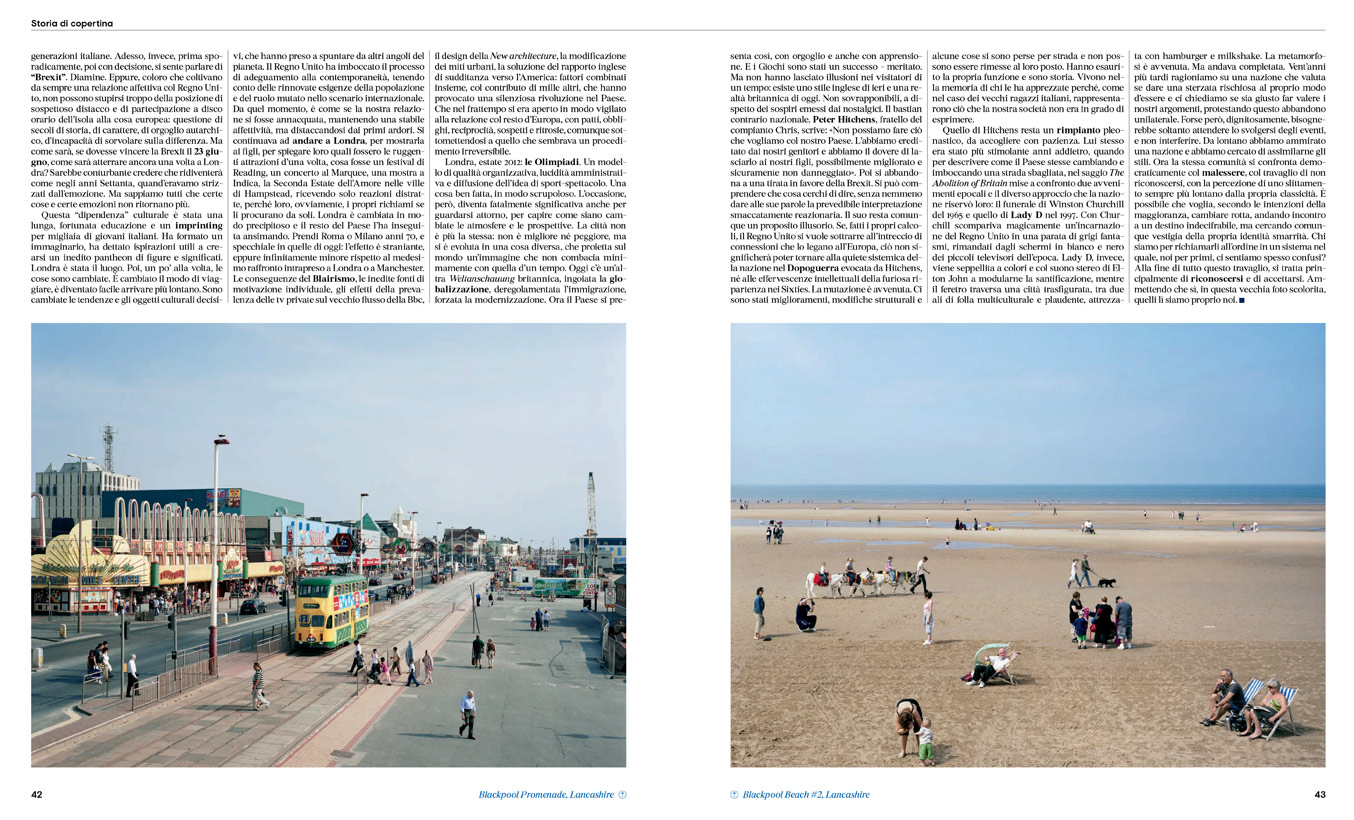
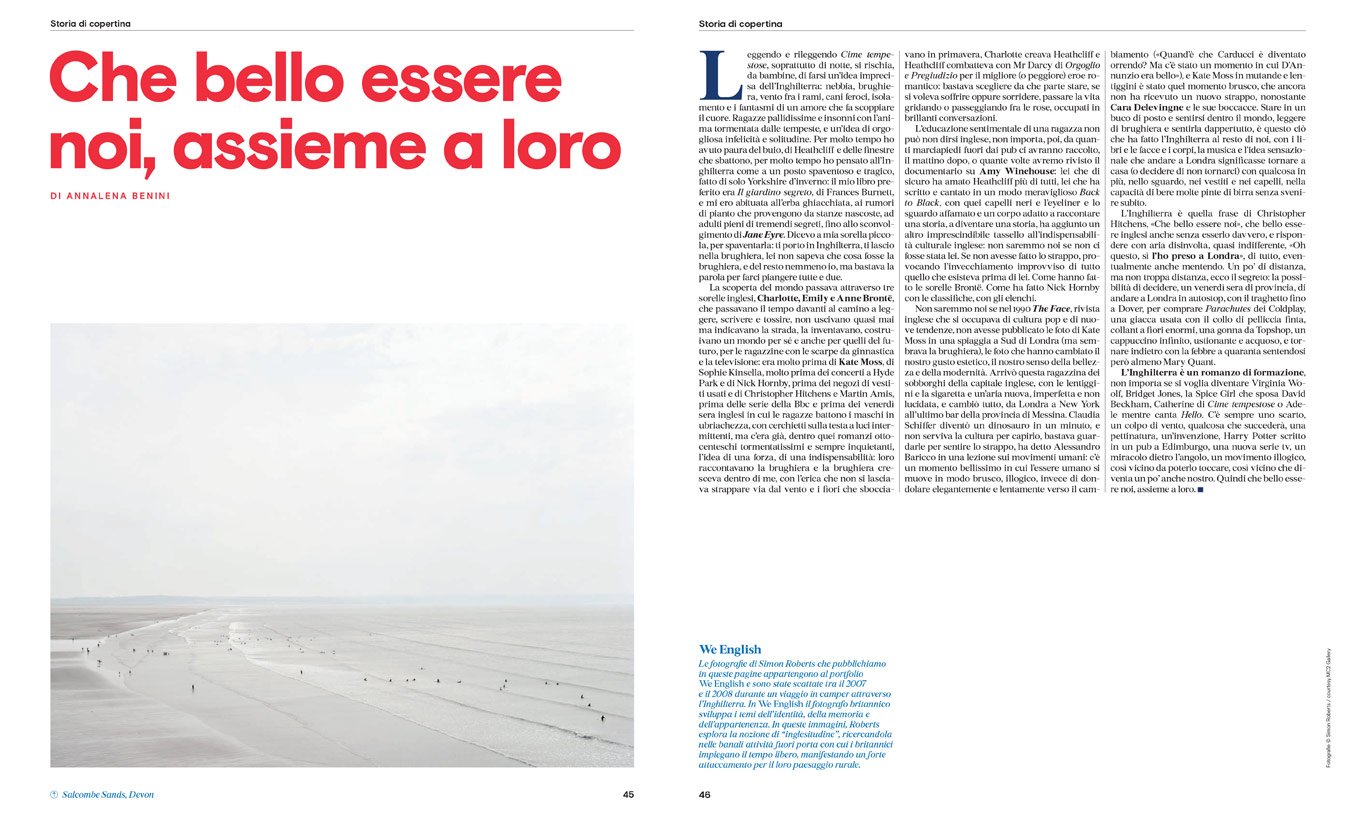
Image: ‘Grouse shoot, Hutton-le-Hole, North Yorkshire, 2008’ Lambda Print, 110 X 150 cm
Flowers Gallery presents The British Figure, bringing together works by British artists exploring the human form over the past thirty years. Demonstrating diverse approaches to process, handling of materials and subject matter, they investigate broad themes from political and social allegory to issues of gender and sexuality, reflecting contemporary attitudes towards what it means to be human, and the world around us.
Read more here: http://flowersgallery.com/exhibitions/flowers/2015/british-figure/
An interview and selection of my work published in the May 2015 issue of Von Magazine, download a pdf here.
Here’s a few sample spreads….
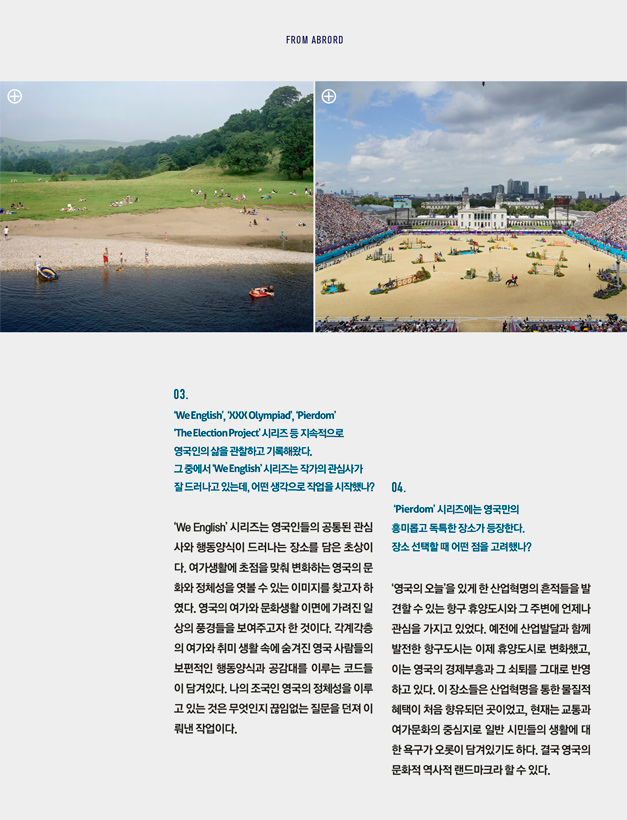
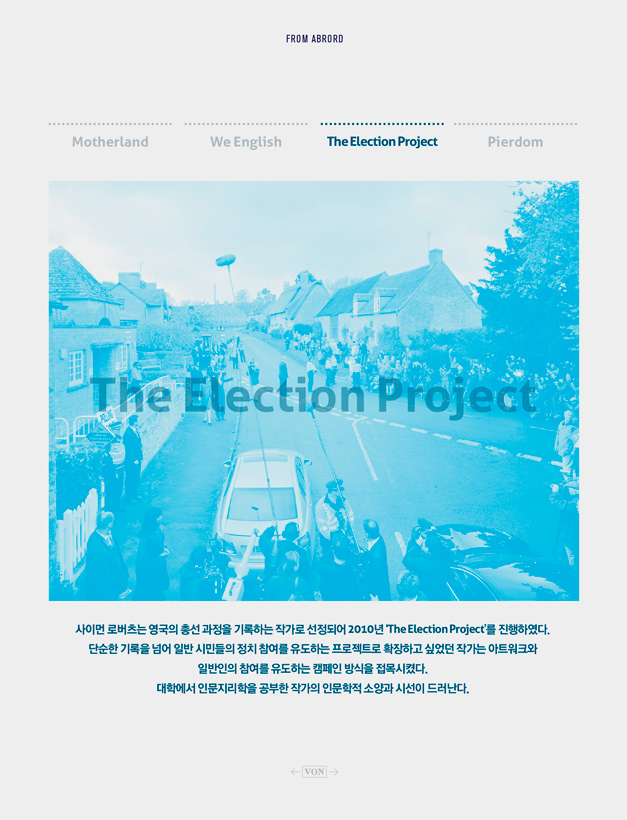
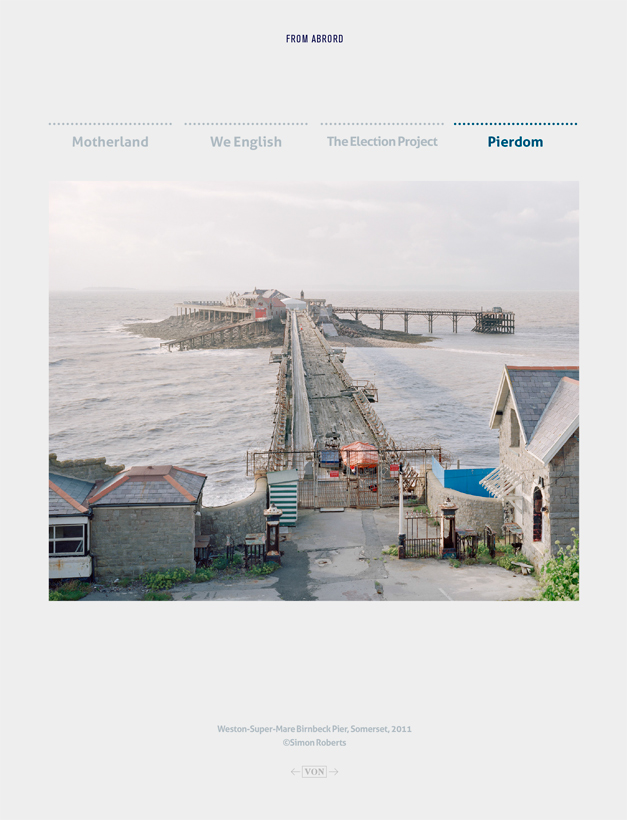
WORK, REST AND PLAY: BRITISH PHOTOGRAPHY FROM THE 1960S TO TODAY
Touring Exhibition: OCT Loft, Shenzhen China
The Photographers’ Gallery, London in collaboration with The Pin Projects, Beijing OCT-LOFT, Shenzhen and with support from the British Council present Work, Rest and Play: British Photography from the 1960s to Today. Featured as part of the 2015 UK-China Year of Cultural Exchange, this will be the first touring exhibition in China solely devoted to British photography.
This exhibition presents a survey of over fifty years of British photography through the lens of documentary practices. Featuring work by some of the most significant photographers and artists of the time, it reflects photography’s growing cultural position both within the UK and on the international stage.
Work, Rest and Play features over 450 images by thirty-seven acclaimed photographers and artists working across a wide range of genres and disciplines, including photojournalism, portraiture, fashion and fine art. Arranged chronologically the exhibition explores British society through changing national characteristics, attitudes and activities over the last five decades. Multiculturalism, consumerism, political protest, post-industrialisation, national traditions, the class system and everyday life all emerge under the broader themes of Work, Rest and Play.
Working life finds expression and contrast through Philip Jones Griffiths’ photographs of Welsh miners in the 50s Anna Fox’s study of London office life in the 80s and Toby Glanville’s portraits of workers in rural Britain in the late 90s; Rest is depicted through landscapes and portraits of the British seaside from photographers including John Hinde, Fay Godwin and Simon Roberts; while Play features humour and the rise of popular culture realised in Martin Parr’s colourful chronicles as well as Derek Ridgers explorations of subcultures and Terence Donovan’s definitive images of British fashion.
Additional works included in this exhibition are by Shirley Baker, James Barnor, Cecil Beaton, Jane Bown, Vanley Burke, Jason Evans, Julian Germain, Stephen Gill, Dryden Goodwin, Tom Hunter, Harry Jacobs, Tony Ray Jones, Karen Knorr, Sirkka-Liisa Konttinen, Melanie Manchot, Linda McCartney, Spencer Murphy, Mark Neville, Nigel Shafran, Paul Seawright, David Spero, Clare Strand, Jon Tonks, Lorenzo Vitturi, Tim Walker, Patrick Ward, Tom Wood and Catherine Yass.
The exhibition will continue to tour to Beijing and Shanghai at dates to be announced.
I’ve got work featured in this new publication Generation ’74, which profiles 11 European Photographers born in 1974. It is officially launching this weekend at the Vilnius International Book Fair.
Photographers: Simon Roberts (UK), Nick Hannes (Belgium), Kirill Golovchenko (Ukraine/Germany), Przemyslaw Pokrycki (Poland), Tomáš Pospěch (Czech Republic), Mindaugas Kavaliauskas (Lithuania), Vitus Saloshanka (Belarus/Germany), Gintaras Česonis (Lithuania), Borut Peterlin (Slovenia), Pekka Niittyvirta (Finland), Davide Monteleone (Italy).
From the publisher: Introductory texts of the book lead the reader from the idea of the joint project of the 74-ers generation in European photography to revealing their similarities, differences and unique features. Every photographer’s work is presented in slots of 10 to 12 pages that start with a picture of childhood. The sequencing of photographers in the book is based on their birth date in 1974. The book ends with questions by Irina Chmyreva and every photographers’ answers to them which help reveal individual roads photography through the labyrinths of the time rich in transformations.
Order the book here.
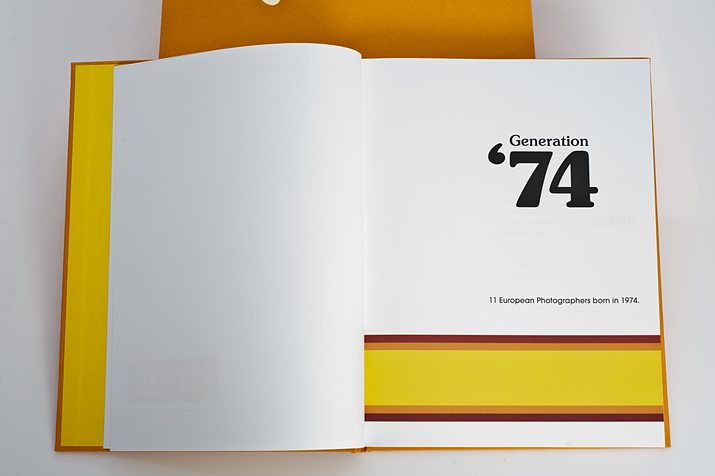
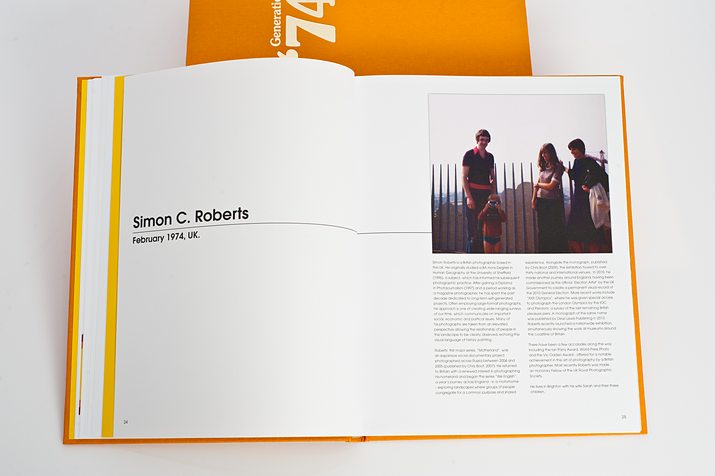
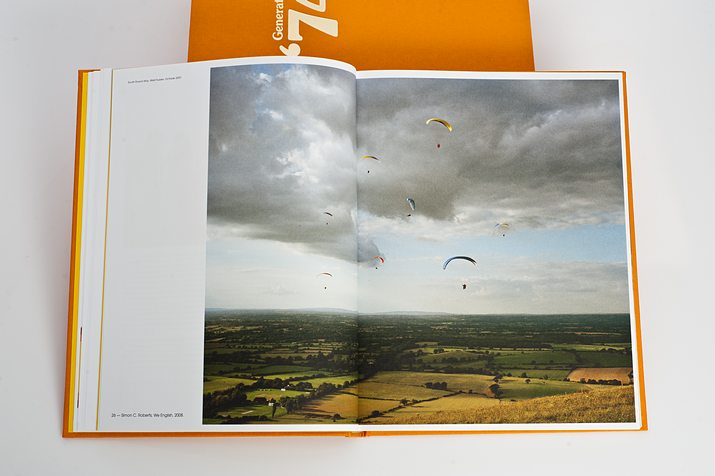
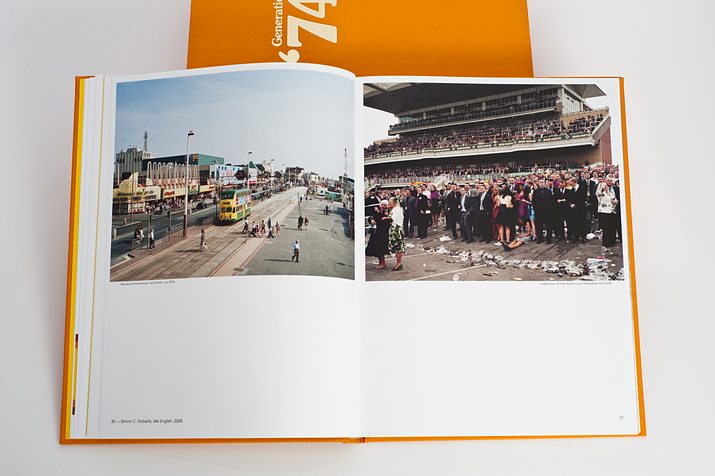
Editors Ángel Luis González (Spain/Ireland), Irina Chmyreva (Russia). Assistant editor Claudi Nir (Germany)
Design and layout Ángel Luis González
Texts: Mindaugas Kavaliauskas (Lithuania), Irina Chmyreva (Russia)
Print run 500
First Edition 2015
ISBN 978-609-8032-10-9
UDK 77.04(4)(084)
Ge223
168 pages, Hardcover
Dimensions: 30,7 cm (height) x 24 cm (width) x 2,4 cm (spine depth)
Weight 1200 g.
Published by Kaunas Photo festival
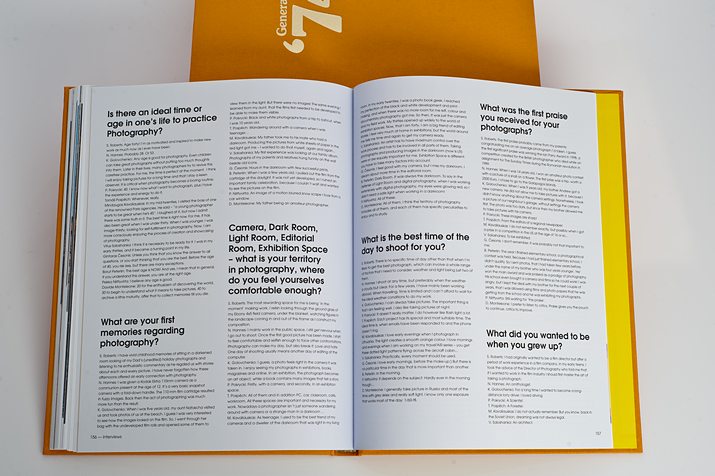
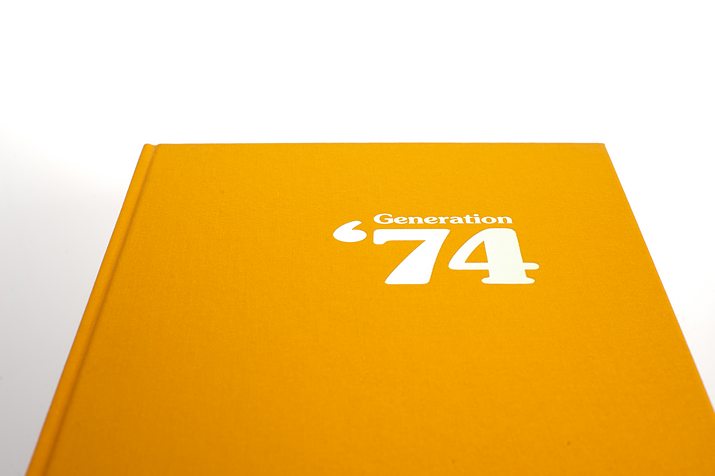
We English by Simon Roberts, “Banal Nationalism” in Landscape? is a journal article by Karine Chambefort-Kay, Université Paris-Est Créteil, from the new issue of Journée d’études, entitled “The American and British Nations in Contemporary Landscape Photography” (December 2014)
Abstract
This paper studies the case of a landscape photography project by British photographer Simon Roberts: We English—the project comprising the book published by Chris Boot in 2009, exhibitions of the large format prints of the photographs, and the artist’s dedicated website with a blog and forum for the public to propose subjects. We address the question of English national identity in Simon Roberts’s photos through the concept of “banal nationalism” coined in 1995 by Michel Billig. The first part draws on Billig’s thesis that the nation is “flagged” in the most banal everyday environment and activities, and discusses whether Simon Roberts’s documentary photographs evidence such subliminal national “flagging”. The second part shows the limits of the concept of “banal nationalism” when studying We English because of the complex, collaborative and reflexive nature of the project. By revealing how personal and intertextual references inform both the photographer’s and the viewer’s perception, the artist documents the dialectical process and negotiations at work in national identification. The third part contends that this dynamic approach of Englishness allows Roberts to propose his own re-imagining of the homeland.
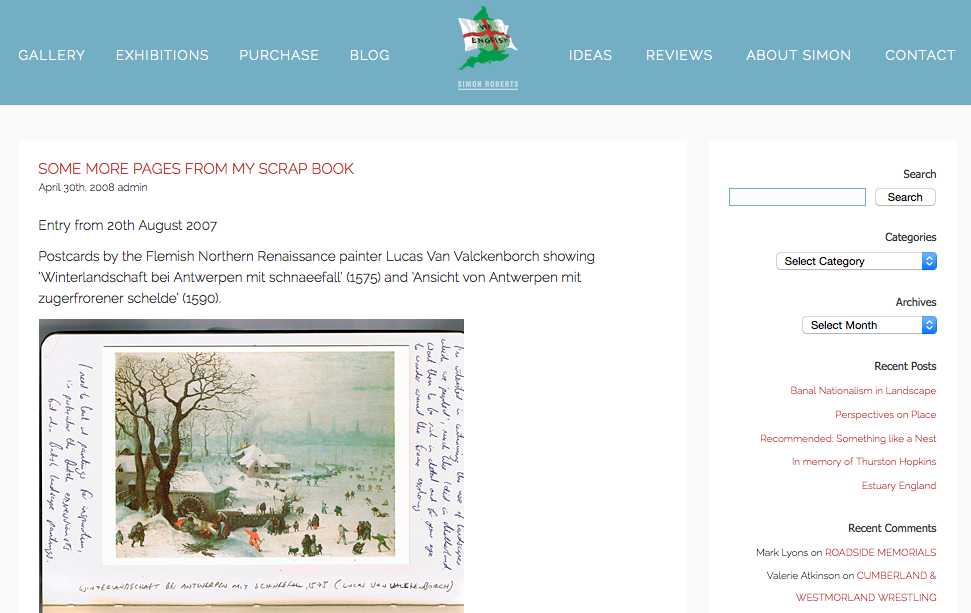
On writing about my working practice for the project, Chambefort-Kay comments:
“A vast framework of references is the backbone of the whole project, and it is made visible through various devices. Simon Roberts opts for transparency on the genealogy of his pictures and on his authorial choices. He questions himself and his audience on the cultural filters and the modes of perception that inform their understanding of landscape. Therefore it is crucial to take into account the whole project, that is, to include both the blog and the pictures in our analysis to appreciate the full scope and impact of We English. Beyond merely documenting the English outdoors, Simon Roberts reveals the different ways in which people connect with the landscape both in nature and in pictures. He offers an insight into the mechanisms through which the national community is constantly re-created in landscape, showing that everything is negotiated individually and collectively.”
And in conclusion, writes:
“We English offers a renewed vision of England. New forms of cohesion and belonging are evidenced, but they are not exclusively found in urban areas. Simon Roberts does not reject the national frame, but reinvents it, by revealing the interactions and relations involved in national identification. The photographs of We English and the whole project actually display the openness of conviviality, which “makes a nonsense of closed, fixed and reified identity and turns attention toward the always unpredictable mechanisms of identification” (Gilroy, 2005, xvi). The nation is re-imagined through a new, dynamic, open vision of England.”
You can download a pdf of the full article here.
Chambefort-Kay recently completed a PhD entitled “Ecritures photographiques des identités collectives, Grande-Bretagne, 1990-2010”, which deals with many British photographers and exhibitions from the period and includes some chapters about We English and The Election Project.
Perspectives on Place by J.A.P Alexander is a new book exploring the history of landscape photography and looks critically at how contemporary photographers continue to find new and innovative ways of engaging with the landscape and their surroundings. It looks at the visual approaches that have been adopted by photographers and artists to facilitate the communication of ideas and themes, as well as more abstract concepts. Practical issues, such as effective composition and managing challenging lighting conditions are also discussed.
Alexander references We English in the chapter Landscape and Power – Inspiring Nationhood. He writes:
“Simon Roberts’s major project We English is a survey of the contemporary English landscape and picks out peculiarities and eccentricities, as well as more commonplace activities of its inhabitants. While the project is likely to be immediately accessible to British audiences, there is a danger this kind of project might leave foreign audiences at loss as to how to interpret the subject matter or even how to confine a nation to conformed stereotypes.
Roberts’s work has been compared to Martin Parr’s Think of England (2001), which isolates English stereotypes more explicitly. Roberts’s photographs are, of course, created and read in a landscape paradigm. The photographer looks specifically at the diversity of English leisure activities in relation to the landscape, ranging from the bizarre – the annual Mad Maldon Mud Race in Essex – to the intimate – Roberts’s photograph of the South Downs in Sussex shows what we assume is a young couple relaxing in a field, a curious echo of the pastoral motif of young villagers courting. As well as the presentation of clichés, such as the couple picnicking barely a few meters away from their car in the Yorkshire Dales, Roberts challenges stereotypes about the English landscape.”
A selection of prints from We English are included in this new group show at Klompching Gallery, New York.
Also included are works by John Blakemore, Tessa Bunney, Odette England, Doug Keyes, Brad Moore, Lisa M. Robinson and Helen Sear.